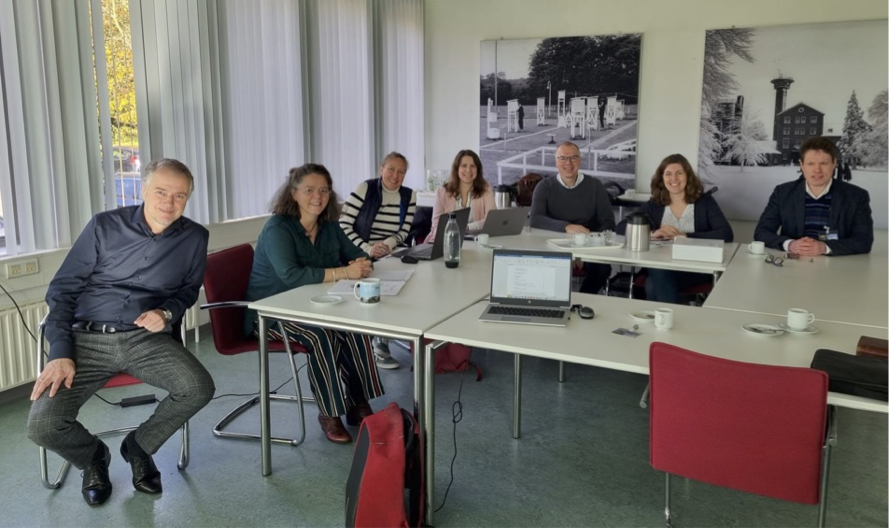On the 7th of November 2023, the Stuurgroep of the Dutch-Flemish Wind Engineering Association (DFWEA) got together at KNMI for a meeting in the morning (mainly about how we can contribute to knowledge transfer in the wind engineering community) with much appreciated birthday girl cake. In the afternoon we had a joined session with the KNMI wind group where we explored the common ground between wind engineering and atmospheric science. First Ine explained the concept of the KNMI wind group and then Chris showed us that wind engineering is everywhere using an impressive photograph of the Kop van Zuid in Rotterdam.

View on Wilhelminakade Rotterdam with on the left the Erasmus bridge (the Swan) and just right of that the tall tower called ‘De Rotterdam’ (photo: prof. Frank Kemper).

Top left: case-study model used in a wind tunnel (Anjali); Top right: measurements on the 210m high Zalmhaven tower Rotterdam (Davide); Middle: VKI 3DTKE PBL scheme validation for 300 m (left), 500m (middle) and 1 km (right) grid spacing showing how VKI3DTKE (red) matches ‘ground truth’ 50m CBL LES (black) (Adithya). Below: morphological approach compared to full CFD (Clara).
After these 4 talented young scientists (3 of them PhD-students) shared their inspiring work. First, there was Anjali who talked about the challenges of geometrical scaling in wind tunnel experiments while performing reduced-scale measurements on a mechanically ventilated building. Then Davide impressed us with the data obtained from short- and long-term measurement campaigns on high-rise buildings. He uses wind and vibration measurements to improve the calculation methods for the prediction of wind-induced vibrations, which currently lead to an over-conservative design. After a short break (just enough to dissolve our line at the coffee machine) we went on to Adithya’s presentation. He works on ways to model the (in)famous grey zone between mesoscale and microscale, emphasizing the necessity of scale-aware physics schemes in weather modeling. He also highlights the enhancements and considerations of a newly developed PBL scheme. Last, but not least, Clara explains how her group is trying to reduce computing time compared to full CFD by preparing the CFD run using a morphological approach (geometry, mesh and boundary and initial conditions).
List of presentations:
Experimental analysis of wind effects on internal depressurization for asbestos abatement: challenges in scaling (TUE, Anjali Radhakrishnan Jayakumari)
Application of in-situ measurements in high-rise buildings to improve the current calculation methods for wind-induced vibrations (Davide Moretti, TNO)
Modelling extreme weather events over the North Sea using WRF-ARW (Adithya Vemuri, VKI)
Using a morphological approach to predict the potential for high wind speed (García-Sánchez, TU Delft)
